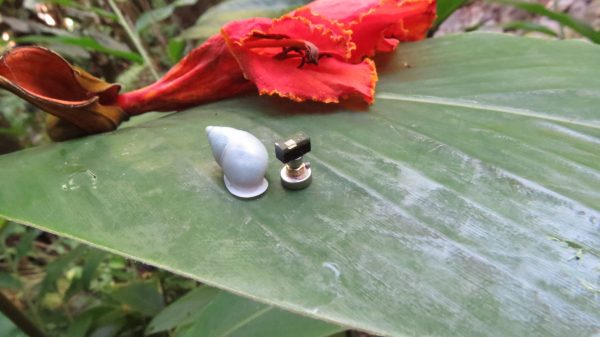
More than 50 species of tree snail in the South Pacific Society Islands were wiped out following the introduction of an alien predatory snail in the 1970s, but the white-shelled Partula hyalina survived.
Now, thanks to a collaboration between University of Michigan biologists and engineers with the world’s smallest computer, scientists understand why: P. hyalina can tolerate more sunlight than its predator, so it was able to persist in sunlit forest edge habitats.
The Michigan Micro Mote (M3), considered the world’s smallest complete computer, was announced in 2014 by a team Blaauw co-led. This was its first field application.
“The sensing computers are helping us understand how to protect endemic species on islands,” said Cindy Bick, who received a Ph.D. in ecology and evolutionary biology from U-M in 2018. “If we are able to map and protect these habitats through appropriate conservation measures, we can figure out ways to ensure the survival of the species.”
P. hyalina is important culturally for Polynesians because of its unique color, making it attractive for use in shell leis and jewelry. Tree snails also play a vital role in island forest ecosystems, as the dominant group of native grazers.
Learn more about the snails and tiny computers on the Michigan News site.
